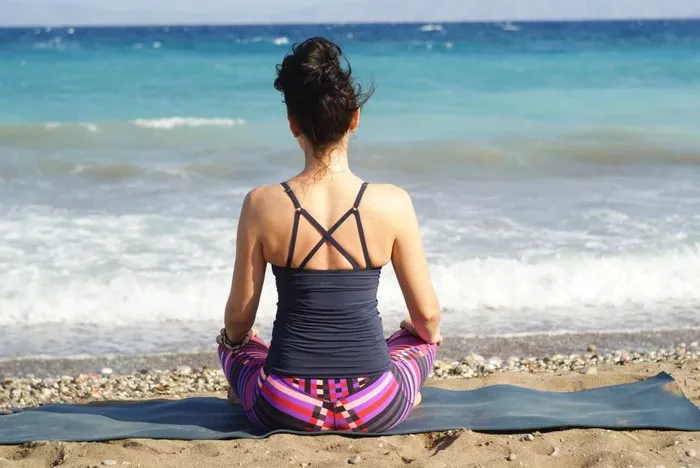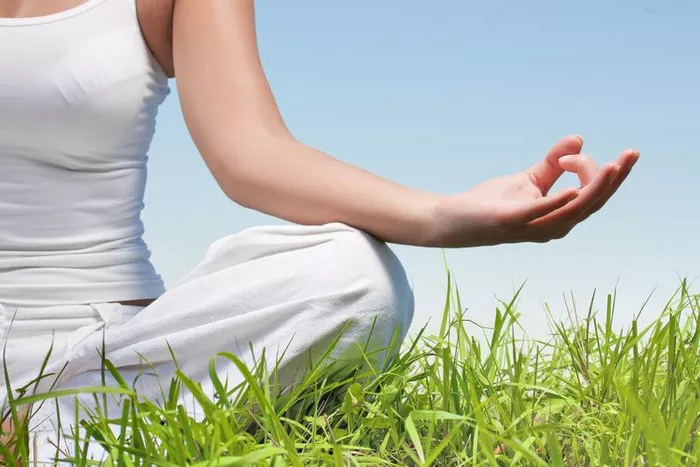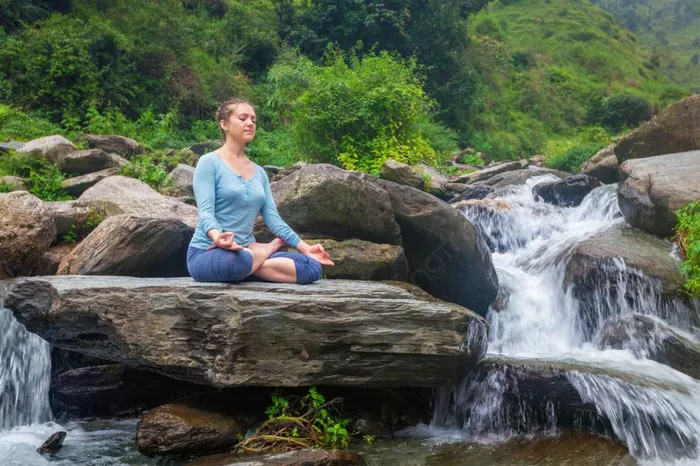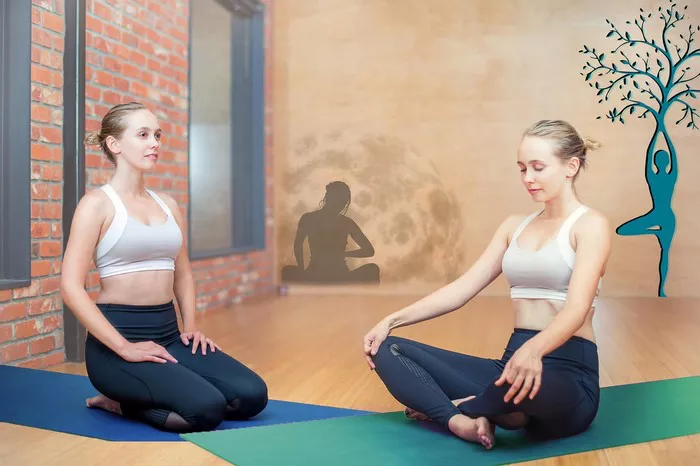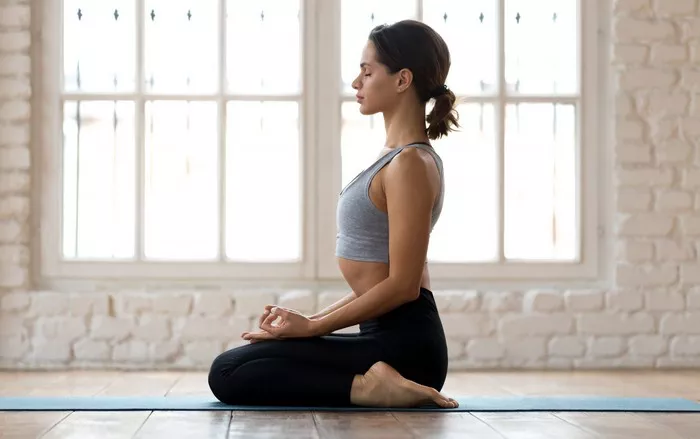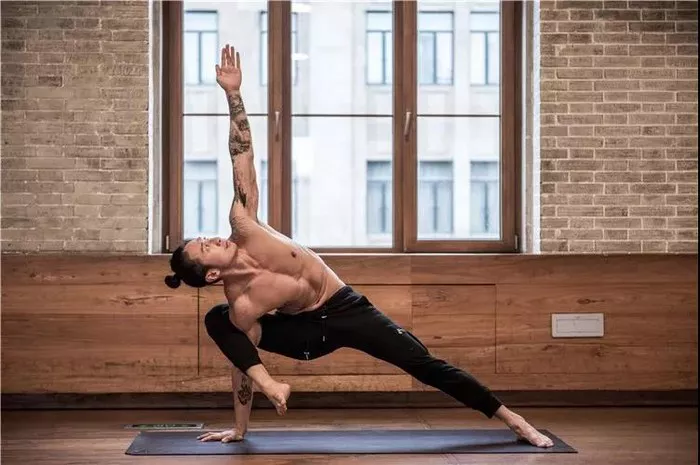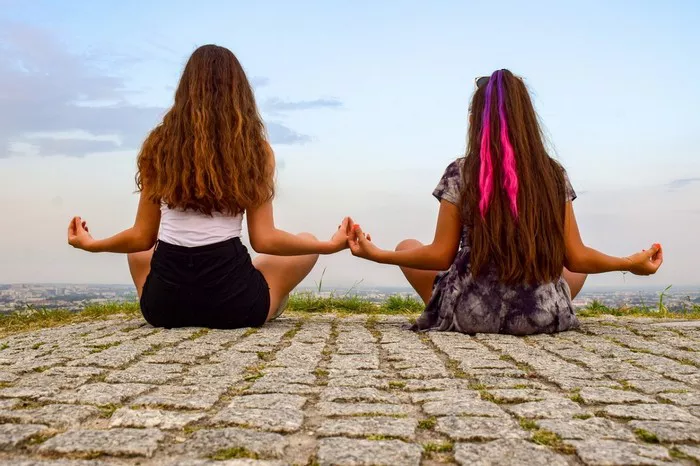Breathing is the most fundamental and involuntary action of our body, yet in the context of yoga, it takes on a whole new level of significance. In yoga, breath is not just about inhaling and exhaling; it is the bridge that connects the body and the mind, the physical and the spiritual. The ancient yogis recognized the power of breath and incorporated it into every aspect of the practice. Proper breathing techniques in yoga can enhance flexibility, increase strength, reduce stress, and promote a sense of overall well-being. It is the key to unlocking the deeper states of relaxation and concentration, allowing practitioners to fully experience the transformative power of yoga.
The Importance of Breath in Yoga
Physical Benefits
Oxygen Supply: When we breathe deeply and fully, we increase the amount of oxygen that reaches our cells. This enhanced oxygen supply is crucial for the proper functioning of all our body systems. For example, during a challenging yoga pose, the muscles require more oxygen to perform optimally. Deep breathing ensures that they get the necessary fuel, reducing fatigue and improving endurance.
Detoxification: The process of exhaling helps to eliminate toxins from the body. By fully emptying the lungs and then taking in fresh air, we assist the body in getting rid of carbon dioxide and other waste products. This detoxifying effect is enhanced when combined with the physical movements and postures of yoga, promoting a healthier internal environment.
Postural Alignment: Conscious breathing can also have a positive impact on our posture. As we focus on the breath, we become more aware of the alignment of our spine and the engagement of our core muscles. For instance, when we inhale deeply, we naturally tend to expand the chest and lengthen the spine, improving our overall body posture.
Mental and Emotional Benefits
Stress Reduction: The simple act of focusing on the breath can calm the nervous system. When we are stressed, our breathing becomes shallow and rapid. By deliberately slowing down and deepening our breath, we send a signal to the body to relax. This helps to reduce the production of stress hormones such as cortisol and promotes a sense of calm and tranquility.
Improved Concentration: Breath awareness is a powerful tool for enhancing concentration. By bringing our attention to the inhalation and exhalation, we train our minds to stay focused in the present moment. This ability to concentrate is not only beneficial during yoga practice but also in our daily lives, helping us to be more productive and efficient.
Emotional Balance: The breath can act as an anchor during times of emotional turmoil. When we feel angry, sad, or anxious, taking a few deep breaths can help us to regain our composure and perspective. It allows us to observe our emotions without being overwhelmed by them, leading to greater emotional stability and resilience.
Diaphragmatic Breathing
The Technique
Finding the Diaphragm: Lie down on your back in a comfortable position. Place one hand on your chest and the other on your abdomen, just below the ribcage. As you inhale, focus on filling the abdomen with air, causing the hand on the abdomen to rise. The hand on the chest should move only slightly. This indicates that you are engaging the diaphragm, the primary muscle responsible for breathing.
Full Inhalation and Exhalation: Inhale slowly and deeply through the nose, allowing the abdomen to expand fully. Feel the diaphragm descend and the lower back gently press into the floor. Then, exhale slowly through the mouth, contracting the abdomen and feeling the diaphragm rise back up. Repeat this process, gradually increasing the length and depth of each breath.
Relaxation and Rhythm: As you practice diaphragmatic breathing, try to relax the rest of your body. Let go of any tension in the muscles and allow the breath to flow in a smooth, rhythmic pattern. You can count to a certain number as you inhale and exhale to maintain a consistent rhythm, for example, inhaling for a count of four and exhaling for a count of six.
Benefits
Increased Lung Capacity: Regular practice of diaphragmatic breathing helps to expand the lungs and increase their capacity. This means that you can take in more air with each breath, improving the efficiency of the respiratory system. Over time, you may notice that you have more energy and endurance during physical activities.
Deep Relaxation: This type of breathing activates the body’s relaxation response. It slows down the heart rate, lowers blood pressure, and reduces muscle tension. Many people find it helpful for falling asleep at night or for relieving stress during the day. By simply taking a few minutes to practice diaphragmatic breathing, you can induce a state of deep relaxation.
Enhanced Digestion: The movement of the diaphragm during this breathing technique massages the internal organs, including the stomach and intestines. This can improve digestion and relieve issues such as bloating and constipation. The increased blood flow to the abdominal area also aids in the absorption of nutrients.
Alternate Nostril Breathing
The Technique
Preparation: Sit in a comfortable cross-legged position or on a chair with your back straight. Place your left hand on your left knee and use your right hand to perform the breathing technique. Gently close your right nostril with your right thumb.
Inhalation and Exhalation: Inhale slowly and deeply through your left nostril. Then, close your left nostril with your right ring finger and release your thumb from the right nostril. Exhale slowly through the right nostril. Next, inhale through the right nostril, close it with your thumb, release the left nostril, and exhale through the left nostril. This completes one round. Repeat the process for several rounds, gradually increasing the number of breaths per round.
Equalizing the Breath: As you practice, try to make the inhalation and exhalation through each nostril as equal as possible in length and depth. This helps to balance the flow of energy in the body and calm the nervous system. You can also focus on the sensation of the air passing through each nostril and the feeling of relaxation it brings.
Benefits
Balancing the Nervous System: Alternate nostril breathing is known for its ability to balance the sympathetic and parasympathetic nervous systems. The left nostril is associated with the parasympathetic nervous system, which promotes relaxation, while the right nostril is linked to the sympathetic nervous system, which is responsible for the “fight or flight” response. By alternating the breath between the two nostrils, we can bring the body into a state of balance, reducing stress and anxiety.
Improving Concentration and Mental Clarity: This breathing technique has been shown to enhance focus and mental clarity. It helps to clear the mind of distractions and improve cognitive function. Many students find it beneficial for studying or for performing tasks that require sustained attention. By regularly practicing alternate nostril breathing, you can train your mind to be more focused and alert.
Enhancing Energy Flow: In yoga philosophy, the breath is considered to be the vehicle for the flow of prana (life force energy). Alternate nostril breathing is believed to balance the flow of prana in the body, promoting overall well-being and vitality. It can help to remove blockages in the energy channels and allow the life force to flow freely, leaving you feeling refreshed and rejuvenated.
Kapalabhati (Skull Shining Breath)
The Technique
Sitting Position: Sit in a comfortable upright position with your spine straight. Place your hands on your knees or in a mudra (hand gesture) of your choice.
Initial Exhalation: Take a deep inhalation through the nose to prepare. Then, exhale forcefully through the nose, contracting the abdominal muscles sharply. This should cause a rapid and strong exhalation, as if you are trying to expel all the air from your lungs.
Rapid Breathing: Without pausing, immediately inhale passively through the nose, allowing the air to fill the lungs naturally. Then, exhale forcefully again, repeating the process in a rapid and rhythmic manner. Start with a slow pace and gradually increase the speed, but make sure to maintain control and avoid straining.
Number of Rounds and Breaths: Beginners can start with 10-15 rounds of kapalabhati, with each round consisting of 10-15 breaths. As you become more comfortable and experienced, you can gradually increase the number of rounds and breaths, but always listen to your body and avoid overexertion.
Benefits
Detoxification and Cleansing: The forceful exhalations in kapalabhati help to expel stale air and toxins from the lungs. It also stimulates the digestive system, promoting the elimination of waste products from the body. This cleansing effect can leave you feeling lighter and more energetic.
Increasing Vitality and Energy: This breathing technique is known for its ability to boost energy levels. By increasing the oxygen supply to the body and activating the abdominal muscles, kapalabhati can leave you feeling invigorated and ready to take on the day. It is often practiced in the morning to wake up the body and mind.
Improving Respiratory Function: Regular practice of kapalabhati can strengthen the respiratory muscles and improve the overall function of the respiratory system. It can increase lung capacity, improve breathing efficiency, and help to prevent respiratory problems such as asthma and bronchitis. However, it is important to note that if you have any existing respiratory conditions, you should consult a doctor before practicing kapalabhati.
The Connection between Breath and Movement in Yoga
Synchronizing Breath and Asanas
Inhalation and Expansion: In many yoga postures, the inhalation is coordinated with the expansion or opening of the body. For example, in a backbend like the Cobra Pose, as you inhale, you expand the chest and lift the upper body, allowing the breath to fill the lungs and create space in the front of the body. This synchronization helps to deepen the stretch and engage the appropriate muscles.
Exhalation and Contraction: Conversely, the exhalation is often paired with the contraction or folding of the body. In a forward fold like the Standing Forward Bend, as you exhale, you release the spine and fold forward, allowing the body to relax and the muscles to stretch further. This coordinated movement and breath pattern enhance the effectiveness of the asanas and promote a greater sense of body awareness.
Flowing with the Breath: In a yoga sequence, the movements are designed to flow seamlessly with the breath. This creates a rhythm and fluidity that not only makes the practice more enjoyable but also helps to build strength, flexibility, and balance. By maintaining a consistent breath throughout the sequence, you can move with grace and ease, fully immersing yourself in the practice.
The Role of Breath in Transitions
Smooth Transitions: The breath also plays a crucial role in transitioning between different postures. A well-timed inhalation or exhalation can make the transition smoother and more effortless. For example, when moving from a standing pose to a seated pose, a controlled exhalation can help you to lower your body gently and find stability in the new position.
Mindful Transitions: By focusing on the breath during transitions, you become more present in the moment and less likely to rush or force the movements. This mindfulness in transition is an important aspect of yoga practice, as it helps to prevent injuries and allows you to fully experience the journey from one pose to another.
Building a Strong Foundation: Consistent attention to the breath during transitions helps to build a strong foundation for more advanced yoga practices. It trains the body and mind to work together in harmony, preparing you for more complex sequences and postures.
Breath in Relaxation and Meditation
Deep Relaxation Breathing
Relaxing the Body: Lie down in a comfortable position, such as Savasana (Corpse Pose). Close your eyes and take a few deep breaths to relax the body. Inhale slowly through the nose, filling the abdomen and then the chest. Exhale slowly through the mouth, releasing any tension in the body with each breath. As you continue to breathe, focus on relaxing each part of the body, starting from the toes and working your way up to the head.
Calming the Mind: Use the breath as a focal point to calm the mind. As you inhale, think of positive and peaceful thoughts, and as you exhale, let go of any stress or worries. You can also count your breaths or repeat a simple mantra in your mind with each inhalation and exhalation. This helps to quiet the mind and bring it into a state of deep relaxation.
Staying Present: If your mind starts to wander, gently bring it back to the breath. Notice the sensations of the air entering and leaving the body, the rise and fall of the abdomen, and the rhythm of the breath. This practice of staying present with the breath helps to develop mindfulness and concentration, which are essential for relaxation and meditation.
Breath Awareness in Meditation
Observing the Breath: Sit in a comfortable position for meditation, with your back straight and your eyes closed. Simply observe the natural flow of your breath without trying to control it. Notice the length, depth, and quality of each inhalation and exhalation. You may notice that the breath is sometimes shallow and sometimes deep, or that it changes in rhythm. The goal is not to judge or change the breath but to simply be aware of it.
Using the Breath as an Anchor: When thoughts arise during meditation, which is natural, use the breath as an anchor to bring your attention back to the present moment. Instead of getting caught up in the thoughts, gently shift your focus back to the breath. This practice helps to train the mind to stay focused and centered, even in the face of distractions.
Deepening the Meditation: As you become more proficient in breath awareness, you can start to explore deeper states of meditation. You may notice that as you focus on the breath, the mind becomes quieter and more still. This stillness can lead to a sense of inner peace and clarity, allowing you to access deeper levels of consciousness and self-awareness.
Tips for Beginners to Master the Art of Breathing in Yoga
Start with Awareness
Daily Breath Check-ins: Take a few minutes each day to simply observe your breath. Notice how you are breathing when you are at rest, when you are walking, or when you are stressed. This awareness is the first step in learning to control and modify your breath. You can do this while lying in bed in the morning or during a short break at work.
Mindful Breathing Exercises: Set aside a specific time for mindful breathing exercises, even if it’s just for a few minutes. Sit in a quiet place, close your eyes, and focus on your breath. You can start with simple techniques like diaphragmatic breathing or just observing the natural flow of your breath. This regular practice will help you to develop a stronger connection with your breath and increase your awareness of it.
Practice Regularly
Incorporate Breath into Daily Activities: Try to bring the awareness of your breath into your daily activities. For example, when you are washing the dishes, focus on your breath as you move your hands. When you are walking, synchronize your steps with your breath. This helps to make breathing a natural and integral part of your life, rather than just something you do during yoga practice.
Consistent Yoga Practice: Attend regular yoga classes or practice at home to get more opportunities to work on your breathing. The more you practice, the more comfortable and proficient you will become with the different breathing techniques. You can start with a beginner’s yoga class that emphasizes the basics of breath and movement, and gradually progress to more advanced classes as you gain confidence.
Seek Guidance
Learn from a Qualified Instructor: A good yoga instructor can provide valuable guidance and feedback on your breathing technique. They can correct your posture, help you to understand the nuances of each breathing exercise, and offer modifications if needed. Don’t be afraid to ask questions during class or seek additional help if you are having trouble with a particular technique.
Use Online Resources and Books: There are many online tutorials, videos, and books available that can provide detailed instructions and explanations on yoga breathing techniques. You can use these resources to supplement your learning and gain a deeper understanding of the subject. However, it’s important to ensure that the sources are reliable and from qualified yoga teachers or experts.
Conclusion
Breathing is the essence of yoga, and mastering the art of breathing can transform your yoga practice and your life. By understanding and practicing different breathing techniques such as diaphragmatic breathing, alternate nostril breathing, and kapalabhati, and by integrating breath with movement and relaxation, you can experience the numerous physical, mental, and emotional benefits that yoga has to offer. Remember to start with awareness, practice regularly, and seek guidance when needed. With time and patience, you will develop a deeper connection with your breath and unlock the full potential of your yoga journey. Whether you are looking to reduce stress, increase flexibility, or enhance your overall well-being, the power of breath in yoga is waiting for you to discover and embrace.
Related topics



